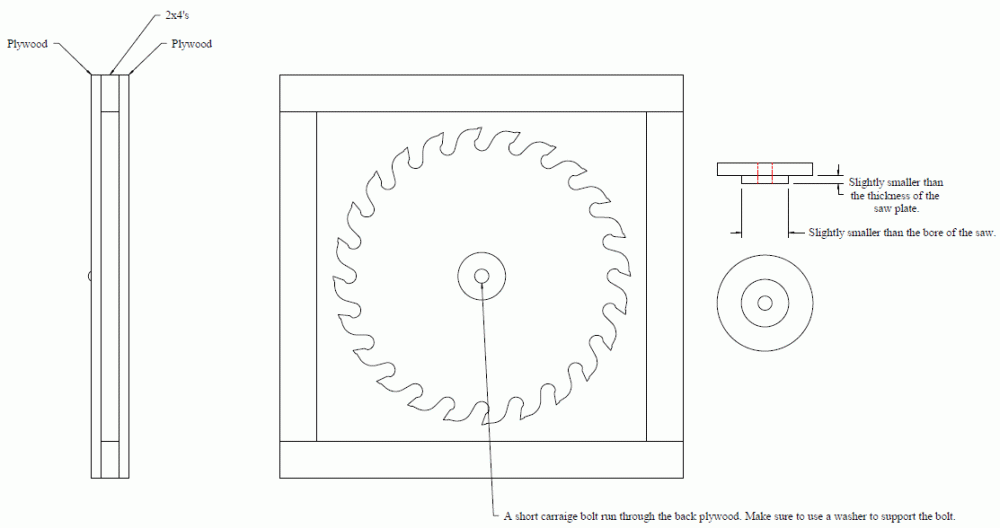Question
In the past I have been fortunate enough to have my sawblades hammered locally or within 50 miles of the sawmill. I now have to ship by trucking companies 800 miles. My concern is making a container to adequately support the blades on the way back so that they do not lose the work on them. I have 2 blades - one is 48 inches and the other is 54 inches. I am afraid if they are loose in a plywood box they will lose their dish from bouncing back and forth, and if wedged, they could be forced out of shape. The teeth are a concern, so that no one is cut or injured. I have seen various wrappings but would like to make something that could be reused.
Forum Responses
(Sawing and Drying Forum)
From Professor Gene Wengert, forum technical advisor:
When I managed a mill, we used a wooden disk-type (round) box that we originally got from Simmonds. It was two halves (Like an Oreo cookie) with a lip on the rim of one half to keep the saw in place. The two halves were bolted together. I have seen these boxes in many places, so the design must be standard. Ours was solid wood pieces nailed together for each half, and not plywood.
If you don't have it, you will find this book to be very helpful: "Circular Sawmills and Their Efficient Operation" by Stan Lundstrum. 1981. State and Private Forestry, US Forest Products Lab, Madison, WI
Incidentally, we had 52", 54" and 60" saws. The 60" never ran well, so we had it cut down to a 48" and then it was our favorite. We used F and 2-1/2 teeth, but I do not recall anymore which saw used which size.
In any case, it is well to repeat: never remove more than one shank at a time and always put the shank back in its original hole. If all the teeth need replacement, replace each one (one at a time) by removing the shank, inserting a new tooth and then reinserting and tightening the shank. The shanks, if moved from their original hole, will cause the saw tension to change.
Saw tension also changes quickly with heat, so always avoid heating the plate of the saw, especially near the rim. (This can happen, for example, when a small piece of waste gets stuck between the saw and the frame. Stop the saw and remove safely ASAP.) One small trick is that a saw that is low on tension might be helped with a little heat at the eye. I saw one mill that used a heat lamp; it worked, but probably was a fire risk.
To make the box just cut the plywood large enough for the saw being shipped and an inch or two of space plus the width of the 2x4's. For larger saws you may have to cut multiple pieces, but just make sure you do not cut equal pieces, otherwise the hole for the bolt will fall on the seam between the panels. Cut the 2x4's to make a frame around the perimeter of the back plywood and use both glue and screws to secure them together. Drill a hole in the center of the back for the carriage bolt to pass through from the outside to the inside; use a washer to add strength. Cut matching plywood sheets for the front of the box.
Now turn a wood circle larger than the bore of the saw blade by an inch or two. Then turn a pilot that is smaller than the bore of your saw by just a little. Drill a pilot hole in the middle for the carriage bolt.
Place your saw in the box over the bolt and then put the wood plug over the bolt and center it in the bore of the saw. Install a washer and a nut. Now you can put the top on and secure it with just wood screws. Make sure to mark the front of the box, as you won't be able to reopen the back due to the glue.
